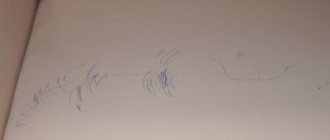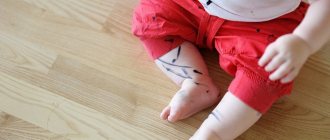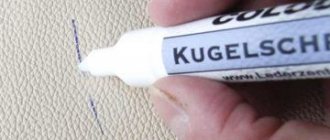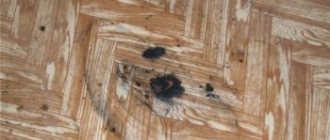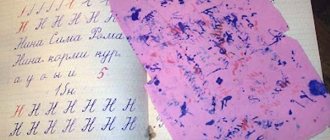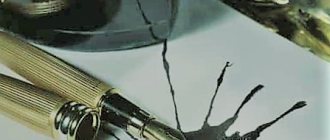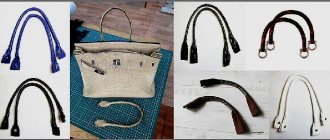How to erase pen from paper without leaving marks is a pressing task not only for schoolchildren or students.
Sometimes in professional activities situations arise in which it is necessary to correct an error or delete an entry on an official form or document.
In almost every home, among household products there are those that will help cope with this problem.
We'll tell you in this article how to erase pen from paper without leaving marks at home.
The main difficulties of removing traces
The main problem that prevents you from getting rid of ink traces efficiently is the thickness and texture of the paper:
The lower the density of the sheet, the greater the likelihood that the sheet will be damaged as a result of writing out a record.- Numbered forms have a looser structure compared to traditional office paper or notebook sheets, so it is better to get rid of ink on them mechanically.
- Coated paper is the most difficult material to remove from a gel or ballpoint pen.
The type of ink used to record is also very important to ensure success:
- In most cases, ballpoint pen ink is easier to remove from the surface of the sheet;
- gel ink comes out more easily only from glossy surfaces, although there is a risk that a faint trace will still remain.
To increase your chances of success, you need to have a sheet of paper similar to the document. Before destroying what is written on the original, it is recommended to practice on a draft.
You can learn how to erase gel pen from paper from this article.
The easiest way
The method, familiar to many from school, is very simple. However, it requires some skill and caution. It is used if you want to remove a small blemish.
All you need to do is take a sharp razor blade or a hard eraser. Carefully scratch the damaged area, remove paper dust and sand.
Gel ink is much more difficult to erase than regular ink. Therefore, this method can be used if the material is very dense.
How to carefully remove regular and gel ink using improvised means?
It is important to prepare not only the products themselves with which you can erase the pen, but also a convenient applicator to apply them pointwise:
- a thin brush with soft bristles;
- cotton swabs for make-up - they have a special pointed tip on one side;
- brushes for applying eye shadow with a sponge.
Potassium permanganate, vinegar and hydrogen peroxide
A great way to remove ink not only from a regular white sheet, but also from a lined sheet:
Dissolve several crystals of potassium permanganate in a teaspoon of 70% acetic acid.- Apply the resulting mixture along the contour of the letters.
- There is no need to wait for it to dry: leaving it to react for 2-3 minutes, follow the traces of the solution with a brush moistened with hydrogen peroxide.
- Iron the sheet through the fabric at a temperature of up to 110 °C.
A solution of potassium permanganate and vinegar does not dissolve printing ink, so the cells or rulers on notebook sheets will remain undamaged.
Acetone and nail polish remover
As a means to help get rid of pen marks, acetone and liquids containing it are often put in first place . However, in practice this method does not work.
Even the most careful spot application will cause the ink stain, diluted with acetone, to spread across the paper. The result is a completely damaged document.
Ethanol
You can only get rid of pen marks using ethyl alcohol on glossy paper. On regular paper, everything will turn out to be blurry ink and the inability to correct anything.
What to take:
- cotton swabs with a pointed tip;
- paper napkin or toilet paper.
Use a cotton swab soaked in alcohol to gently wipe along the outline of the letters. After each application, forcefully apply a napkin to the marks being erased. This will allow the ink to remain on the napkin and cotton swab. Glossy paper cannot be dried with an iron; it must be placed under a press and left until dry.
Soda, citric acid or juice, salt
A slight clarification of what is written is the maximum that can be achieved by using these means in any combination and sequence.
However, fine salt or baking soda with a little water makes an excellent abrasive that can completely erase a pen:
Pour soda or fine salt with water until a thick paste is obtained;- apply the paste to the inscription that needs to be removed;
- Clean in a circular motion with light pressure until traces of the handle completely disappear;
- shake off the abrasive, let it dry first under a press, then iron it through several paper sheets or napkins.
There are no traces of the pen left, and damage to the top layer of the sheet is insignificant.
Potato and corn starch
Starch will help to cope with the greasy and bright traces of roll-on or gel paste. This method will require quite a lot of time and will not help get rid of marks completely, but will serve as an excellent preparatory step for abrasive processing:
- Dilute a few tablespoons of corn or potato starch with warm water to the consistency of thick sour cream.
- Place some of the mixture on the inscription to be printed.
- Wait until it hardens and carefully remove. Some of the ink will remain on the starch crust.
- Mix the mixture in a container and place a new portion on the sheet.
Repeat until the pen mark no longer remains on the starch crust. Dry the sheet, complete the removal with soda or salt as an abrasive.
When the ink is colored
The above methods are quite suitable for removing multi-colored ink.
In addition to them, ink is output:
- applying shaving foam to the unwanted inscription (other products available in the bathroom will not work);
- fresh milk or curdled milk. The composition is applied to the ink using a toothpick or cotton swab;
- saline solution with the addition of hydrochloric acid. Dissolve 2 grams of salt in a tablespoon of water and add 2-3 drops of hydrochloric acid; the resulting solution is applied to the ink inscription.
You should work with hydrochloric acid very carefully - it itself and its vapors can cause serious burns.
How to discreetly remove it with household chemicals or delete a recording with cosmetics?
The application of household chemicals should also be targeted, so cotton swabs, brushes or narrow sponges should be used as tools:
Gel “Whiteness” is the most affordable whitening product.
It should be applied with a brush or the sharp tip of a cotton swab. Light inscriptions disappear in one application; on bright inscriptions the gel will have to be renewed two or three times. The remaining gel can be easily removed with a slightly damp sponge. Price – from 50 rubles.- Gel "Domestos" - the principle of use and effectiveness are similar to "Belizna", but the cost of the product is almost three times more expensive. Price – from 150 rubles.
- Stain remover "Dr. Beckmann" . The product helps get rid of ink marks, but in terms of the nature of the action and the final result it is in no way superior to the Whiteness gel. Cost - from 250 rubles.
- Sodasan stain removal concentrate is the absolute leader in both quality of ink removal and cost. A 200 ml package will cost 650-800 rubles.
- Toilet soap - despite the absence of chlorine and other bleaching substances in the composition, in most cases it gives an almost ideal result.
White soap must be cut and sharpened so that it is sharp enough to apply to the word being removed. Wet the soap and rub it with sliding movements from side to side several times over the area to be cleaned. Blot with a napkin or toilet paper. Repeat until all traces of paste disappear. Price – from 20 rubles. - Whitening toothpaste is affordable and very effective. Damage to the sheet surface is minimal. For optimal results, you should choose a paste of a combined composition containing gel strips. Apply the paste with cotton swabs and, pressing lightly, peel the paper from the handle. Remove the remaining paste with a sponge and dry the sheet. Price – from 50 rubles.
When removing pen marks with products containing chlorine, you should be prepared for the fact that the treated area may turn yellow.
How to erase pen from paper without “side effects”: 4 rules
In order not to damage the paper, not to turn a small slip into a large blot and not to cause harm to health, when removing paste you need to follow four rules.
- Try before using. The ink remover should be tested first. It’s best to do it on a sheet of the same paper, or at least on the back side.
- Choose a convenient tool. If you need to clear a small area of paper from ink, apply the composition using a cotton swab, toothpick, thin watercolor brush, pipette or syringe.
- Proceed carefully. Do not use “rolled” cotton wool. Loose hairs can smear the stain even more, and they can be difficult to remove. Do not rub the paper too hard to avoid damaging the sheet.
- Observe safety precautions. When using flammable products, clean the paper away from sources of fire. If hazardous substances are used, work in a well-ventilated area. It is advisable to wear safety glasses and work with rubber gloves. Dry sheets treated with aggressive substances in a draft out of the reach of children.
Mechanical methods
Mechanical methods are quite effective in removing both ballpoint and gel pens:
Safety razor blade .
Nowadays such blades are rare. The blade must be taken by the safe edges and bent slightly so that the thinnest top layer of paper is cut off with the curved sharp edge. There are practically no marks left, but there is still a risk of cutting through the sheet by catching too much.- Sandpaper . You need to choose the finest grain size. Use circular movements with minimal pressure to erase the inscription. Upon completion, a slight trace of roughness will remain.
- The patch is one of the most effective methods. You need to choose a fabric-based patch in a roll or plate. Cut pieces of the patch that are the size of the inscription that needs to be removed. Stick it on it, roll it with your finger for better adhesion and remove it. Part of the inscription will remain on the sticky side of the patch. Repeat until it disappears completely.
- Eraser - You will need a Koh-i-Noor double-sided eraser.
One of its sides is soft, and the other has abrasive particles. The abrasive side will do a great job of removing paste from the sheet. The second way to remove it using an eraser is to trace the inscription along the contour with a simple pencil of hardness HB or TM and erase it with a regular eraser. Repeat tracing and erasing until the inscription disappears. - Wet finger - this method only works with a ballpoint pen. Wet your finger and use circular movements without pressing to erase the inscription from the paper. Despite its apparent simplicity, this method is also one of the most effective.
Abrasive methods for destroying pens are suitable for paper with a density of at least 80 g/m.
Baking soda
Let's start with one of the most affordable, safe and very effective remedies - baking soda. To do this, you need to mix the powder with water and achieve a paste consistency. Next, the resulting thick solution is applied to the area of fabric contaminated with ink and left to “acidify.” After 10 minutes, the clothes are washed and thus finally get rid of the “ink attack”.
The good thing about soda is that you can perform manipulations with it on any fabric, even the most delicate and finicky, without any fear of spoiling it.
What can't you do?
Acetone, turpentine, and dimexide are often cited as the most effective means. Their use will not only not help get rid of pen marks, but will also leave colored stains that will completely ruin the sheet.
Household chemicals used to destroy the inscription should not contain dyes . It is better if they are white or transparent. In such a case, there is a guarantee that after removing the paste from the paper you will not have to get rid of traces of the dye contained in the active substance.
You will find many useful tips and recommendations on removing pen ink from various surfaces and objects here.
Is it possible to remove stains from cardboard?
Ink blots on thick, glossy or colored paper can be easily removed in this way:
- In a small, shallow container, mix ethyl alcohol and glycerin in equal proportions.
- We draw it into a syringe or pipette and moisten the blot.
- After the stain disappears, blot with a napkin and dry. If necessary, you can use an iron.
The glossy surface can be easily cleaned of ink with any alcohol-containing liquid, provided that it does not contain fragrances or dyes.
Removing blots with “White”
If you have a question about how to remove marks from a gel pen, you can use the following method:
- dilute a small amount of “Whiteness” in water;
- soak a cotton swab in the solution;
- process the recordings with light blotting movements;
- let dry.
“Whiteness” is a fairly aggressive agent. You can remove gel paste practically without traces using this method only from white paper. On colored surfaces there will be a yellow or white stain.
Mustard
Mustard copes well with ink marks. Just attention! We are not talking about table seasoning in a beautiful jar. In our case, we need natural mustard powder, diluted in water to a paste.
You will need very little of it - just enough to cover the contaminated area with the resulting mixture. The ink should “acidify” for several hours, preferably overnight. This is followed, as usual, by rinsing or light hand washing.

